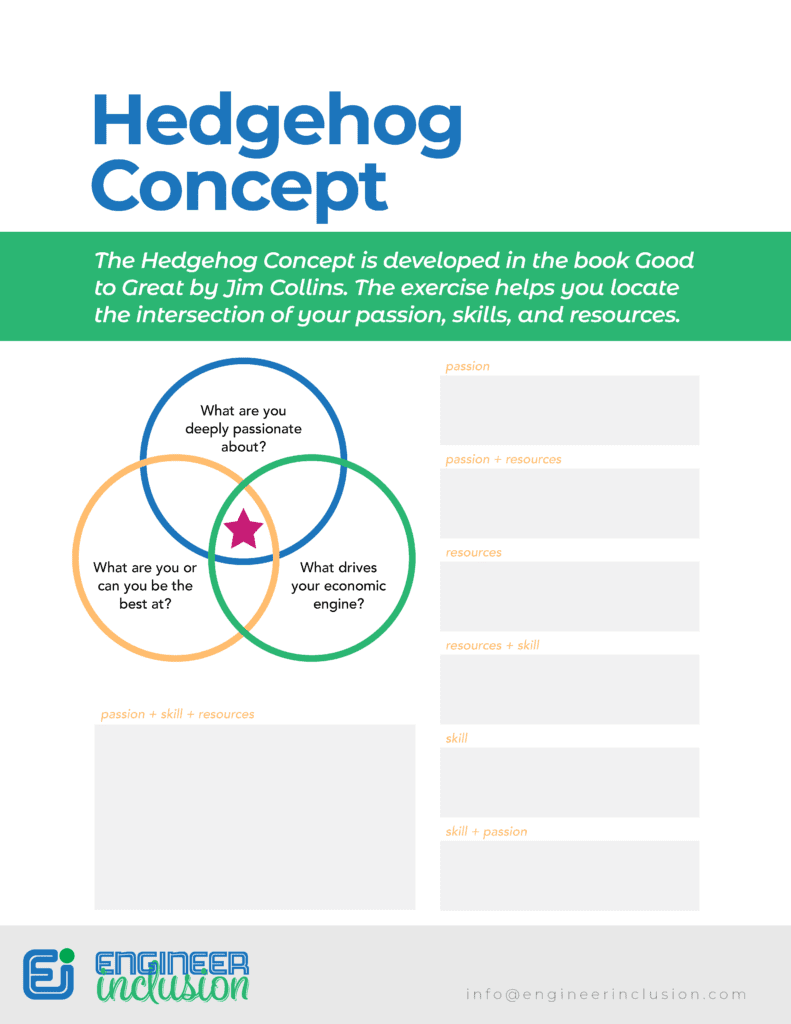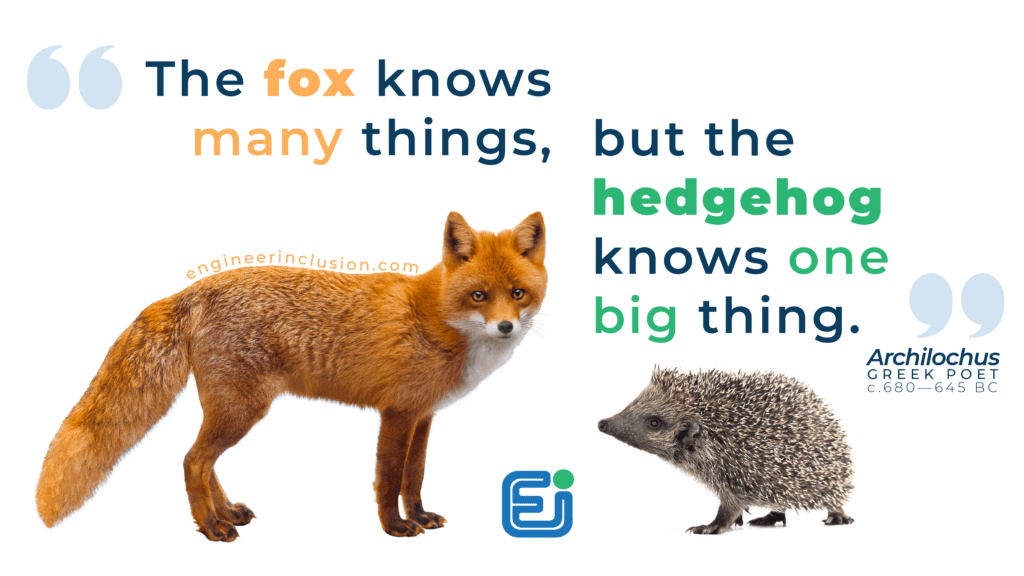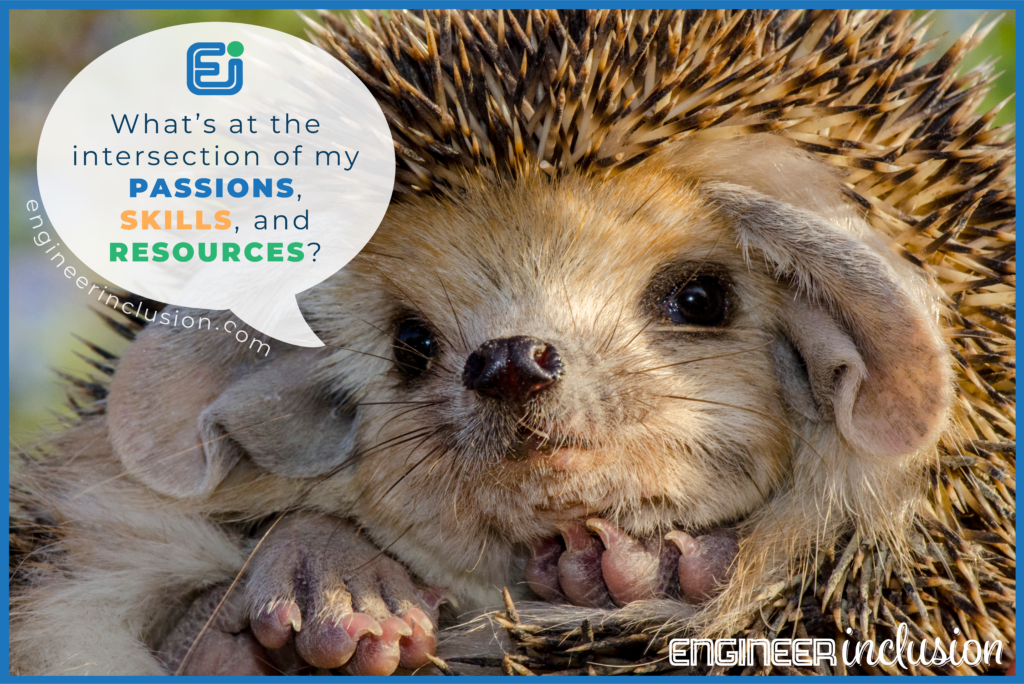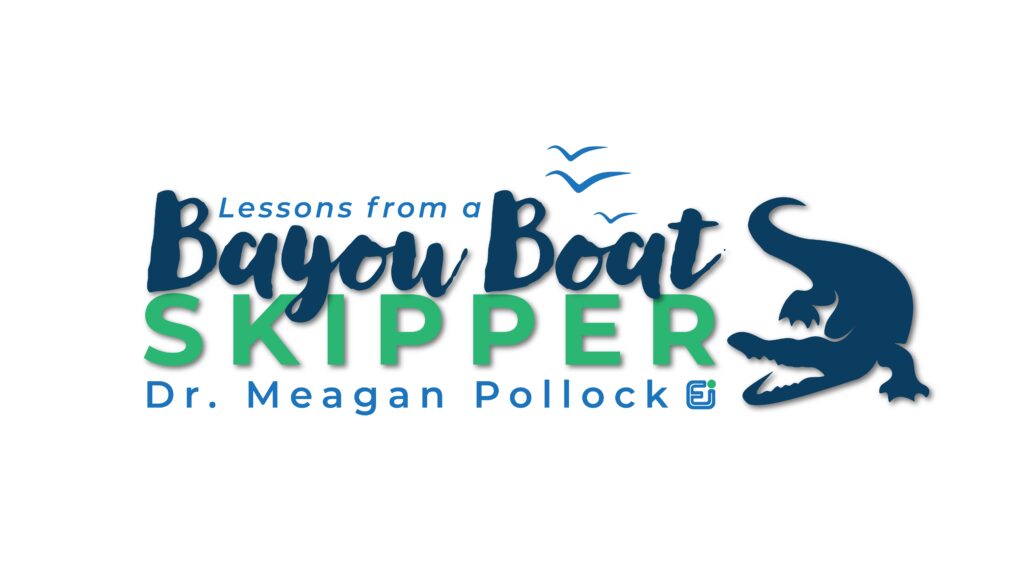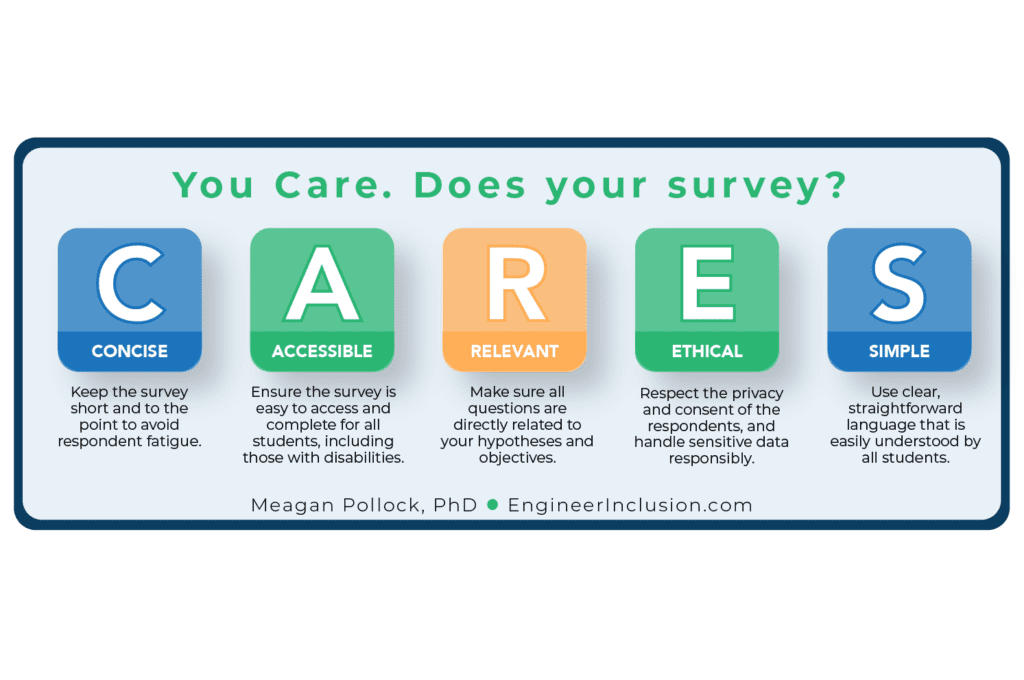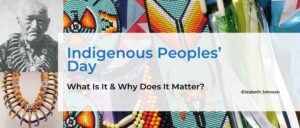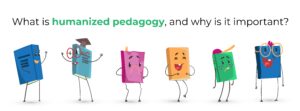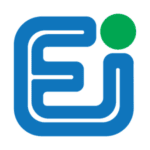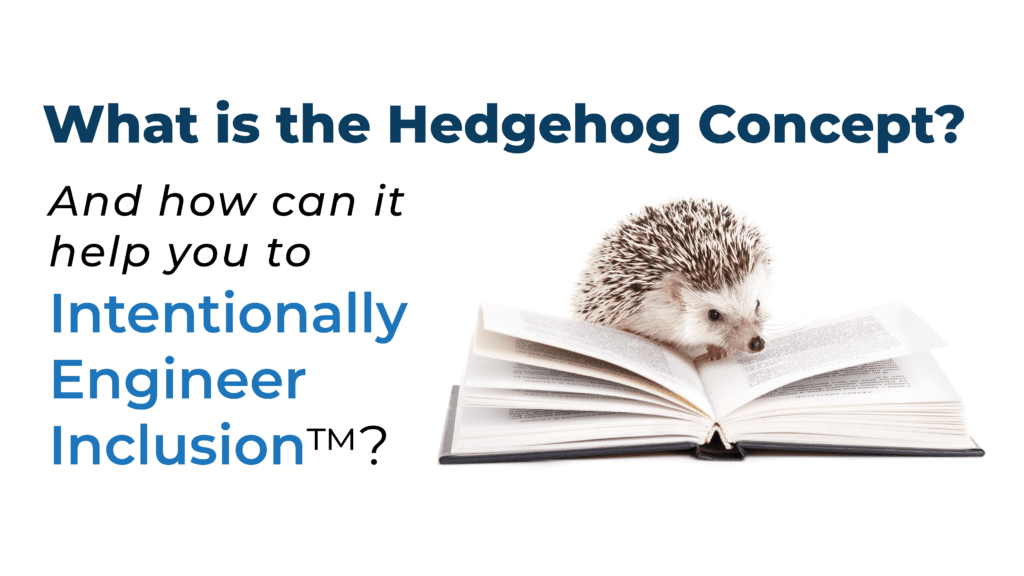
If we want to Intentionally Engineer Inclusion™ and positively influence our organizations towards diversity, equity, inclusion (DEI) and belonging, we have to prioritize and take action. In this post, we describe the hedgehog map exercise and provide a series of prompts to help you identify the intersection of your passions, skills, and resources. Plus we offer a PDF download worksheet and additional resources for further reading. For when we find actions and make decisions from the greatest overlap of these three elements, we will have greater motivation, agency, and potential for impact.
The Fox and the Hedgehog
Archilochus was a Greek poet who lived from 680 to 645 B.C. He wrote, “the fox knows many things, but the hedgehog knows one big thing.” Many people have interpreted the parable over the last ~2600 years, including philosopher Isaiah Berlin, psychologist Phil Tetlock, and researcher/author Jim Collins.
In his book, Good to Great, Jim Collins develops the hedgehog concept, the intersection of three circles:
- What are you deeply passionate about?
- What you can be the best in the world at?
- What best drives your economic or resource engine?
Collins theorizes that transformations from good to great come about by:
- a series of good decisions made consistently with a Hedgehog Concept
- a series of good decisions supremely well executed
- a series of good decisions accumulating upon another.
Transformations from good to great come about by a series of good decisions made consistently with a Hedgehog Concept, supremely well executed, accumulating one upon another, over a long period of time.
Jim Collins
Hedgehog Maps for Progress
If we want to Intentionally Engineer Inclusion™ and positively influence our organizations towards diversity, equity, inclusion (DEI) and belonging, we have to take action. Some of us have broader circles of influence than others, but wherever we are, we must focus our efforts and take action toward change.
One way to do that is to use a hedgehog map, based on Jim Collins’ hedgehog concept to help you prioritize and plan.
When we identify the intersection of our passions, skills, and resources, we will have greater motivation, agency, and potential for impact.
Below we provide some prompts to guide you through the exercise. Download a PDF form handout at the end of this post to help you.

Guiding Prompts for a DEI-Impact Hedgehog Map
PASSIONS
What areas of DEI interest you most within your circles of influence and control?
Where do you want to focus efforts: hiring, pay equity, communication, collaboration, policy, meeting protocols, employee resource groups, events, etc.?
What dimension and intersections of identity are you most passionate about focusing efforts: race, gender, socio-economics, LGBTQIA+, religion, neurodiversity, ethnicity, immigration, etc.?
SKILLS
What are you good at and where do you hold the most professional influence?
What skills do you have that can help you help others: speaking, teaching, networking, writing, advocating, nominating, planning, management, etc.?
In what areas are you most respected and known? Are you a known thought leader or contributor in a certain area that enhances your potential influence?
RESOURCES
Resources include all forms of capital, and we like the Community Capitals Framework: natural, cultural, human, social, political, financial, and built capitals.
Learn more about the Community Capitals Framework below.
Community Capitals Framework
Though some may consider time and money may to be the most precious of resources, the Community Capitals Framework utilizes an asset perspective and is helpful in analyzing all types of valuable resources.
Consider all of the strengths of the resources you have, and identify how each capital asset can help you to achieve your DEI goals.
"The Community Capitals Framework (CCF) offers a way to analyze community and economic development efforts from a systems perspective by identifying the assets in each capital (stock), the types of capital invested (low), the interaction among the capitals, and the resulting impacts across capitals. The National Rural Funders Collaborative (NRFC) analysis includes indicators of seven different components of community capital: natural, cultural, human, social, political, financial, and built capitals. The NRFC chose this approach because of its emphasis on assets (rather than needs or deficits) and its focus on investments."
Emery, M., & Flora, C. (2006). Spiraling-up: Mapping community transformation with community capitals framework. Community development, 37(1), 19-35. http://7ev.co/4AJM
- Natural: assets that abide in a particular location
- Cultural: the way people know, do and be within their world as well as their traditions and language
- Human: skills and abilities of people
- Social: connections among people and organizations
- Political: access to power, organizations, connection to resources and power brokers
- Financial: monetary assets or budget to invest in capacity building
- Built: infrastructure supporting these activities
Now, download the PDF below and complete the hedgehog map exercise to help you locate the intersection of your passion, skills, and resources. Use the questions provided above to help you.
Additional Reading
- Hedgehog Concept from Good to Great, Jim Collins
- Good to Great: Why Some Companies Make the Leap...And Others Don't by Jim Collins
- Are you a fox or a hedgehog? Here's what an ancient saying reveals about your leadership style, Business Insider
- The Fox And The Hedgehog: A Story of Triumphs and Tragedy, NPR
- The Hedgehog and the Fox: An Essay on Tolstoy’s View of History, Isaiah Berlin
- On Grand Strategy by John Lewis Gaddis
- Superforecasting, Phillip Tetlock
Download this resource as a printable PDF and digital worksheet.
When you download this resource, you agree to be added to our mailing list. We send about one email with resources and strategies every week. You can unsubscribe at any time.
